After nearly three months of you acing meals with basic recipes at home, three Mumbai chefs challenge you to up your culinary game
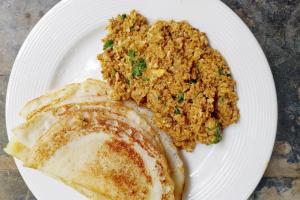
Dosa with chicken kheema ghotala. Pic/Rhea Mitra Dalal
The lockdown has turned us into cooks. We have used up all the easy hacks from three- ingredient cakes without an oven, Dalgona coffee and the easy-peasy banana bread. It is time to take the challenge a notch higher.
ADVERTISEMENT
On Maria Goretti's Instagram handle, there's a video of her attempting the poached egg. As the water whirls, the egg white, which almost seems like it has dispersed, is coming together and wraps itself around the yolk and she lets out a childlike glee. "In Indian cuisine, we rarely poach eggs; we have more cooked versions like bhurji and omelette. The half-fry is as runny as it gets. A poached egg is when the egg white cocoons around the egg yolk that is creamy and runny. You pick it up with a spoon and place it on your toast with avocado, or a bed of creamy spinach with a hollandaise sauce," she explains.
Still in the process of mastering the technique, Goretti says the lockdown is a perfect time to do it. "In a pan of water, you add salt and vinegar. The latter prevents the egg white from feathering. The egg white is protein and begins to coagulate. The whirling of the water is what keeps everything together. A poached egg gone wrong is an overcooked egg, so nothing to lose," she laughs.
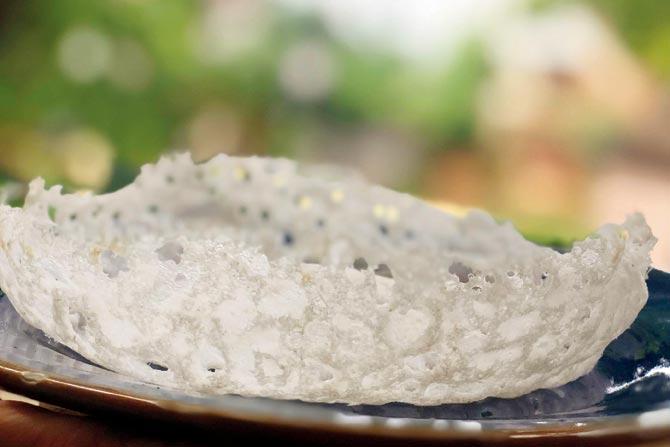
Appam
On the Indian front, Goretti has been triumphant with appams. Reminiscing about her days as a VJ, she recalls a trip to Chennai with her colleague and friend Nikhil Chinappa. "We checked into the hotel and met for lunch. He ordered a spread and it was the first time this Bombay girl tasted appams!" recalls Versova-resident Goretti, drawing our attention to the gruel that plays an important part. "You soak rice overnight, add fresh coconut and stale rice, and grind it. The residue in the mixer is mixed with water which forms the gruel. It is then mixed with salt and yeast and left to ferment. You make a paste with the remains of what's in the mix with water, cook it, cool it and add it once it cools down. This is what makes the appams fluffy and light." Her only tip is to keep practising any technique you choose to experiment with. "Some say not to twirl the appam batter twice to retain the lace-like edges. It is all about trial and error."

Poached egg on toast
Meanwhile, Navi Mumbai home chef Rhea Mitra Dalal has made more than 20 attempts at perfecting the simple dosa, and is still learning. "Many of my TamBram friends use the ready-made idli batter to make dosa at home and I thought: 'Yeh toh ho jayega.' But getting the perfect texture requires skill. I will get to making the batter from scratch but for now, it is getting the perfect round with rings of fluff and rings of crisp. In my trials, I learnt that putting a few drops of oil on my non-stick before pouring the batter makes the dosa clumpy. Without the oil, the dosa bubbles into a lovely spongy texture in the centre. I now drizzle the oil on the top. Also, you are not supposed to palti [flip] the dosa; that was my light-bulb moment. Also, I prefer a ladle to pour the batter than the vati that the dosa stallwallas use."
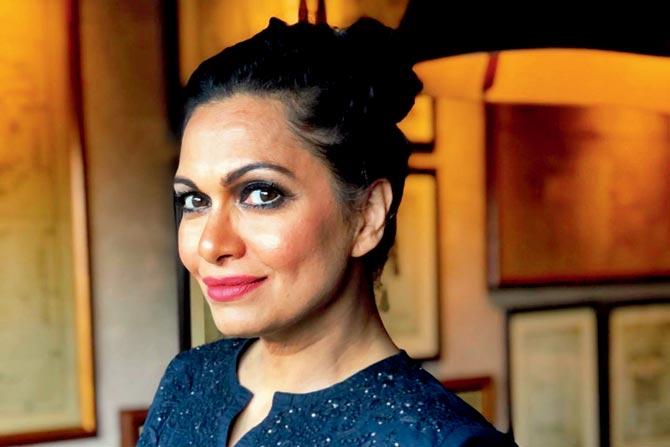
For momos, we spoke to Dalal's friend Doma Wang, who runs Blue Poppy restaurant in Kolkata. "There is nothing more to momo dough except water and maida. The dough has to be tough and have elasticity. A soft, watery texture will not work. The half-moon shape and the money bag shape are the easiest to attempt. Ensure the meat quality is good, so the filling of mince tastes great. We use ginger paste to flavour the onion and mince mix."
Not just another soup
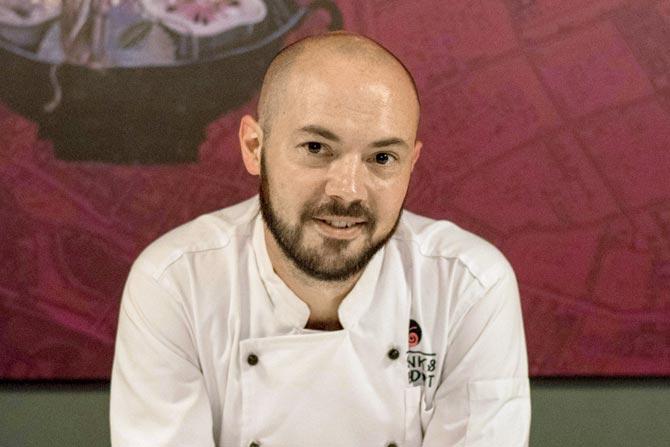
Chef Alexis Gielbaum of Slink & Bardot and Souffle S'il Vous Plait says all stages require patience to achieve the perfect consomme, which is a clarified soup that feels much more refined and much less rustic. "The bones need to be roasted just right to deepen the flavour, without having any blackness; a sign of carbon which will result in bitterness," Gielbaum says. The most common mistake while making a consommé is to whisk in the egg whites too hard; this leads to breaking down the protein. Another error is adding the egg whites before your stock has completely cooled to room temperature. Both scenarios will result in scrambled egg soup.
Consommé
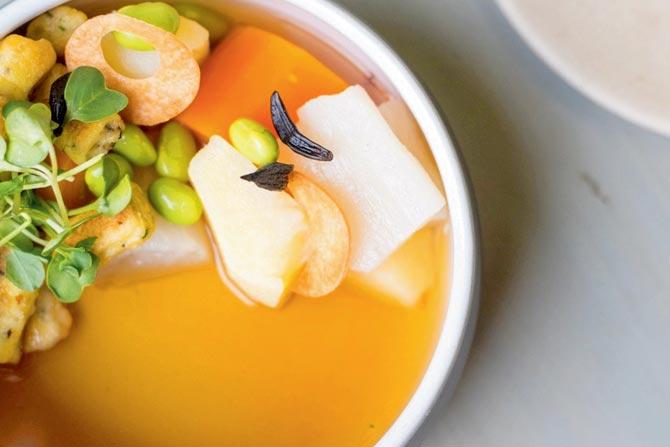
Ingredients
- 1 chicken carcass (meat, skin and fat removed)
- 2 carrots
- 1 leek
- 1 celery rib
- 2 white onions
- 1 head of garlic
- 1 bouquet garni (3 sprigs of thyme, 1 bay leaf, 5 parsley stems)
- 30 ml neutral oil
- 1.5 litres water
Ingredients for raft
- 1 white onion
- 1 carrot
- 1 celery rib
- 2 egg whites
Method
Start by rubbing the chicken carcass with 15 ml of oil and roast at 180 degrees Celsius for 30 minutes or until golden brown. Peel and chop the vegetables roughly. The carrots must be kept very large as they are most likely to cloud your consommé. In a large heavy-bottomed pan, sweat the onions and carrots on low heat for 5 minutes. Add water followed by all the other ingredients and bring to a simmer, and skim the scum as it rises to the surface. Simmer for three hours, then cool to room temperature. Strain this preparation. To clarify your consommé, finely dice vegetables (brunoise) and put into a small bowl with raw egg whites. Put your strained stock back into a large pot and very gently whisk in your egg whites and vegetables. Slowly bring your stock back to a simmer. Your egg whites and vegetables will coagulate and rise to the top crafting a raft, which draws out and collects all impurities. Once simmering, immediately remove from the heat. Cool back to room temperature, remove your raft and you'll have a perfectly clear consommé.
Fluffy delight
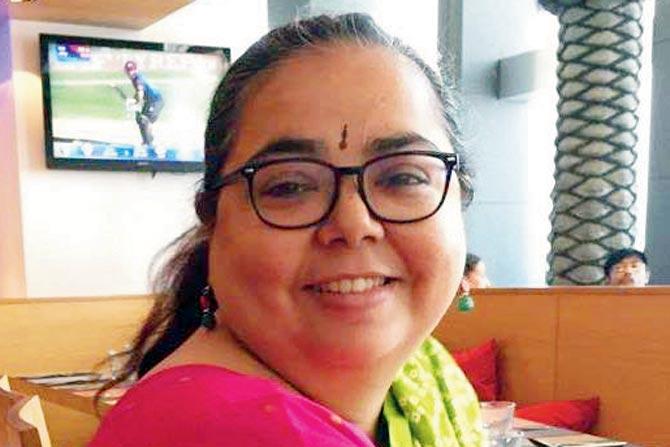
Rhea Mitra Dalal has been studying Bengali food for a few years now. "I thought the aam'er luchi will be just like the original maida puri but with added mango pulp. But it is not so — it needs chhana, and is kneaded in coconut milk. I referred to the recipe by Amish O Niramish Ahaar by Pragyasundari Devi, a vintage cookbook on Bengali food."
Aam'er luchi

Pic/Rhea Mitra Dalal
Ingredients
- 375 gms maida (all-purpose flour)
- 2 tsp ghee
- 30 gms chhana or use fresh malai paneer
- 3/4 cup mango pulp
- Fresh coconut milk as required (approximately 3/4 to 1 cup)
- Ghee for frying
Method
To make the dough, mix the chhana into the maida. Mash the chhana as finely as you can with your fingers pressing to flatten the granules. Add maida a little at a time to the chhana and keep mixing and kneading till all the maida is used up. You will end up with a crumbly mixture. Add ghee and mix well. Add the mango pulp. Next, add the coconut milk and knead a soft dough. Use as much coconut milk as is required. The dough should be smooth and soft with no stickiness at all. Knead the dough for several minutes; work it well. Make small balls of the dough and roll out luchis around 6 inches in diameter. Heat ghee in a kadai and fry the luchis. Hot ghee will ensure your luchis fluff up nicely, but regulate the heat to ensure the ghee doesn't burn.
Catch up on all the latest Mumbai news, crime news, current affairs, and a complete guide from food to things to do and events across Mumbai. Also download the new mid-day Android and iOS apps to get latest updates.
Mid-Day is now on Telegram. Click here to join our channel (@middayinfomedialtd) and stay updated with the latest news
 Subscribe today by clicking the link and stay updated with the latest news!" Click here!
Subscribe today by clicking the link and stay updated with the latest news!" Click here!






